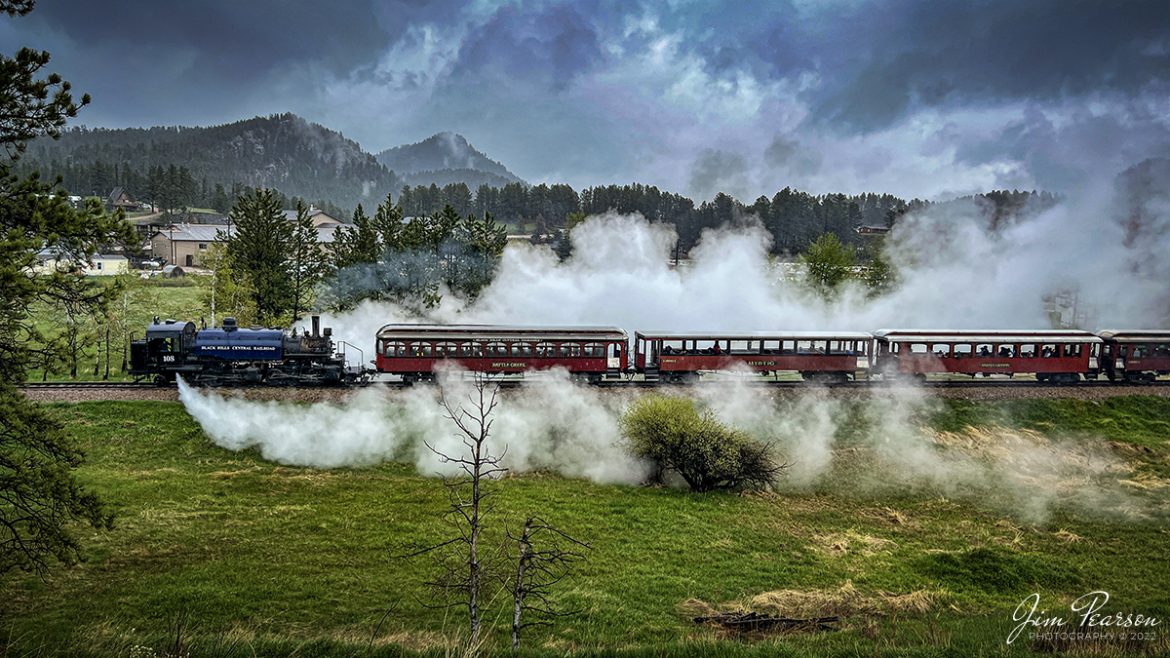The 1880 Train, Black Hills Central Railroad locomotive crew on 108 performs a blow down on the engine as they arrive back at Hill City, SD on May 30th, 2022, under stormy skies.
A Blowdown, where the left and right blow down cocks, located at the lowest portion of the firebox sides (mud ring), are opened to blow out mineral sediments in the boiler water. Addition of various chemicals in the tender water is designed to keep the sediments (mud, etc.) from sticking to the internal steel components of the firebox/boiler. On a regular basis, those “settled” sediments need to blown out at safe locations on the railroad. Thus, the locomotives are being “blown down”.
According to their website: Locomotive #108 joined its nearly identical twin, #110, at the beginning of the 2020 season following a four-year restoration. It is a 2-6-6-2T articulated tank engine that was built by the Baldwin Locomotives Works in 1926 for the Potlatch Lumber Company. It later made its way to Weyerhaeuser Timber Company and eventually to the Northwest Railway Museum in Snoqualmie, Washington.
The acquisition and subsequent restoration of locomotive #108 completed a more than 20-year goal of increasing passenger capacity which began with the restoration of #110 and the restoration of multiple passenger cars. Both large Mallet locomotives (pronounced Malley) can pull a full train of seven authentically restored passenger cars, up from the four cars utilized prior to their addition to the roster.
Tech Info: iPhone 13 Pro Max, 5.7mm, f/1.5, 1/1147, ISO 50.

